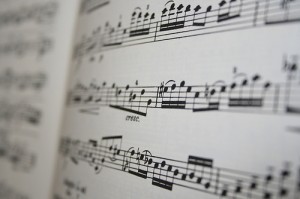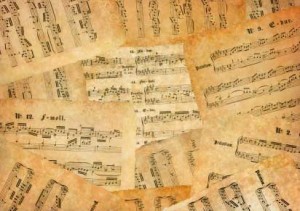
By: Dachary Carey
When does music become public domain? Music falls under the same copyright as text, but sound recordings are governed by a different set of rules, so you should know which set of laws control the content you’re seeking.
Music itself is protected by standard copyright law.
Music and lyrics are protected by the same copyright law that protects books and other fixed works. While the specifics vary in some cases, general guidelines for copyright law are:
Works created before 1923 are public domain.
Works created between 1923 and 1964 are protected for 28 years. Copyright holders can renew copyrights for an additional 67 years, but, if they don’t renew, copyright protection lasts for only 28 years.
Works created between 1964 and 1977 are copyright protected for 28 years, but the 67-year renewal is automatic, for a total of 95 years of copyright protection. The earliest works under this category are in the public domain starting in 2059.
Works created after January 1, 1978, are protected for the life of the creator plus 70 years.
Sound recordings fall under a different set of rules.
Fixed sound recordings fall under a different set of rules from music and lyrics. What this means is that music and lyrics for a song recorded in 1963 may be in the public domain, if the copyright holder failed to renew the copyright, but a fixed recording of that music might still be protected. Therefore, you could conceivably make your own recording using the copyright-free music and lyrics, but you couldn’t use the protected recording of the same content.
Some sound recordings before 1972 may fall under state anti-piracy guidelines or other laws, but those laws vary from state to state. A series of federal copyright laws protect fixed sound recordings made before February 15, 1972, until February 15, 2067. Sound recordings after February 15, 1972, are protected to varying degrees at least until 2043. A majority of sound recordings are protected until 2048, or longer, depending on the individual circumstances.
International music is governed by copyright law in the country of origin.
United States copyright and music protection laws govern only works created in the United States. Works created in other countries are governed by the copyright and music protection laws in the country of origin, which vary significantly from country to country.
Sampling and mashups: Legal, or copyright violation?
Sampling is taking one section or portion of a song and using it in a different song. Sampling has incited much legal debate, and the current status of sampling is that most bands clear samples prior to releasing an album. Legal rulings have found that even using three notes from a song can constitute copyright infringement, so sampling generally involves paying royalties or a fee to the copyright owner.
Mashups happen when people blend or combine two or more songs. The most common form of mashup involves using the lyrics of one song with the music of another song. Mashups generally take more of the music directly than sampling, and therefore they have even less legal ground to stand on if a copyright holder chooses to sue a mashup creator.
Link To Original Article


